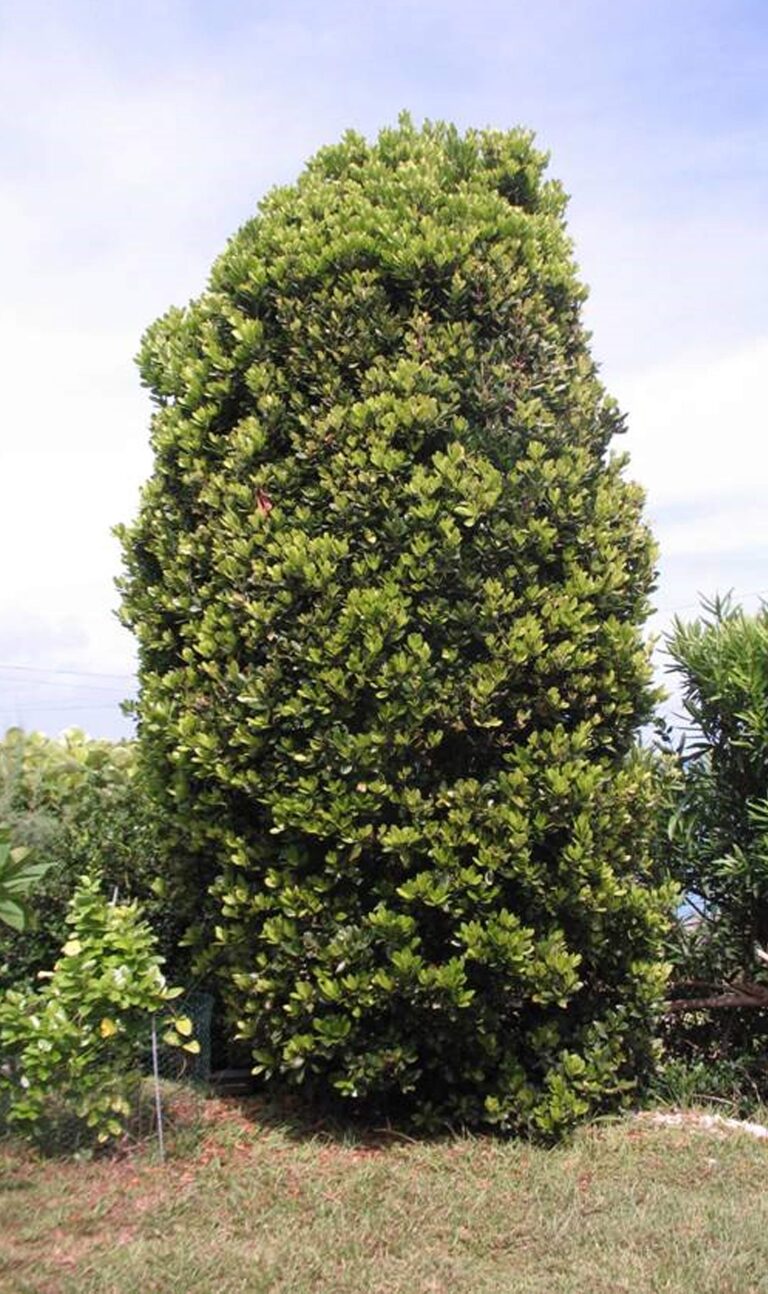There is a reason why native and endemic species such as the Bermuda cedar, olivewood bark, bay grape, sea ox-eye or tassel plant have survived here. They can withstand hurricanes as well as a coastal environment that is harsh even when the wind isn’t blowing.
While natives and endemics aren’t the only species that can survive a hurricane, it’s worth knowing which plants have withstood the test of time if you don’t want to have to replace and replant everything after a storm.
Trent Smith is assistant garden centre manager at Aberfeldy Nurseries. He shared his expertise about what to plant, how to take care of your plants and trees to give them the best chance of survival, and what to do after a hurricane to help your garden recover.
Trees, shrubs, hedges
“Pittosporum is the number one,” explained Smith of the popular shrub which is good for hedging. “That would be one of the first choices to stand up to the wind and salt spray. If you look after a heavy blow, you will see that pittosporum is one of the few that has got green leaf after a hurricane.”
His second choice is olivewood bark, not just because of its ability to withstand storm conditions, but also because it is a “beautiful tree” on its own and can be used to create a hedge. Other species he recommended are Calophyllum, privet, viburnum, Elaeagnus, silver and green buttonwood, mock orange and cocoplums.
Whichever species you decide to plant however, the better you take care of them, the stronger they will be, and for this he recommended annual pruning: “That gives the plants a firmer structure. The trunk is strengthened, the branch structure is strengthened.” The best time to do this is early in the year.
Plants and vegetables
Flowering plants, fruit trees and vegetables need a lot more protection from the wind and should therefore be planted in sheltered areas. “You can’t have both worlds,” laughed Smith. “If you have a beautiful South or North Shore view, you can’t have beautiful plants. Mostly, all the plants that are going to give you a beautiful flower, can’t stand up to the weather.”
One thing you can do, however, is create natural protection for these plants by planting a “wind break” of, for example, Calophyllums, olivewood, bay grape, or even oleander around a certain area. “You’re building a hedge cage of trees around the area where you want to put your vegetable garden or your fruit trees,” he said.
Alternatively, you can put plants in pots, which can easily be moved when needed. For larger pots too heavy to lift, he suggested laying them down before the storm, and wedging them in somewhere. Aberfeldy also sells a “shade cloth covering”, which, if properly secured, can help protect vegetable gardens.
Storm preparation and aftermath
One of the best things you can do for your plants or trees before a storm is to water them thoroughly because the moisture could help prevent some of the burning. Similarly, once you have power, he recommended hosing everything off afterwards to remove as much salt as possible.
One thing you shouldn’t do immediately however, is cut back all the damaged plants. Instead, Mr Smith waits two to three weeks because, he said, “sometimes the tree needs every leaf and branch that’s alive. I like to wait to see what flushes back out, what’s dead, then I prune”.
He also recommended a pruning paint, which acts like a sealant and helps to stop some of the cracking. “It’s like a band aid on the sore,” he said.

